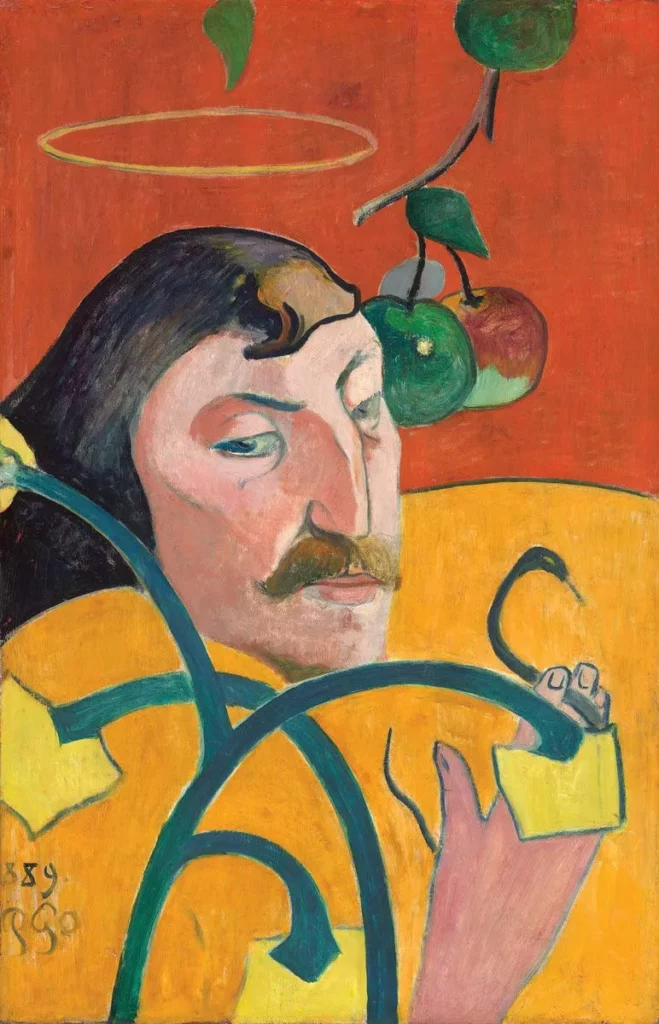

Full name: Eugenie-Henri- Paul Gauguin
Born: June 7, 1847 In Paris, France
Died: May 8, 1903 in Atuona, Hiva Oa, Marquesas, French Polynesia.
His early years were not spent in the field of art but as a merchant marine then as a stock broker and the wealth that came with the it until the market crashed. It was at this time he was introduced to art by the business man Gustav Arosa who Gauguin’s mother had entrusted with her family’s welfare at her death. Arosa introduced Gauguin to his future wife, a Danish woman named Mette Sophia Gad. They had 5 children together. There are many biographies available online to learn more details about his life and work. I want to focus on his art and use of color.


His artistic influences began with Arosa and his art collection and with a fellow stockbroker Émile Schuffenecker with whom he started painting. He helped organized the showings of the impressionists and was friends with many artists of note at the time including Van Gogh. He spent much time with Van Gogh, painting in the French countryside.




An interesting tidbit I found from one of the biographies was related to the incident when Van Gogh cut off his ear. One of the theories is that this was actually the result of an argument with Gauguin and that Gaugin cut it off with a sword but the razor story was to protect his friend. I find the story plausible. Van Gogh did suffer from mental illness so he could have also cut if off himself. The truth has been buried in time.

Portrait of Van Gogh painting sunflowers by Gauguin
His artwork
He coined the term to describe his art as Synthetism but also could be described as primitive. He sought the primal and shunned the modernism that had even influenced the natives of the Islands such as Tahiti.
He was the leader of the new art that became Post-Impressionism and Fauvism that influenced artists like Munch and other symbolists and cubists of the post-modern era such as Picasso and Matisse.
As he developed his artwork and broke away from the impressionists. He believed that art should evoke feelings and not realism. He felt that artists should avoid realness to subjects even in the depiction of nature. How does the color and the subject make the viewer feel when seeing the painting? Still, he was inspired by other artists and art styles. You can still see the influence of Japanese art in his work such as his very famous painting, The Vision After the Sermon, see below.

Looking at the above painting you can see the marvelous use of color. The picture plane has been cut through diagonal with the tree, inspired by Japanese art. We are seeing two realms, the physical and the spiritual. We are a part of the faithful seeing a vision off in the distance. He really draws the viewer in, creating the emotional response that he felt was important for artists.
Use of Color
His use of color is brilliant. The broad and true nature of the hue that blocks the plane and the outline of figures creates a flatness and defined space. He didn’t let the real color of nature dictate the color on the canvas. Looking at his painting, the Yellow Christ, shows a great departure of color realism.

In true Gauguin style, the feeling is flat and lacks realism. The yellow is a bit jarring along with the orange/red of the trees. The scene is set in “today”. It is a vision among the faithful like the previous painting.

Yellow haystacks
Lessons for todays artists
I think it is important for artists today to discover the artists of the past. Finding your voice as an artist begins with listening to voices that came before. Examining the work of Gauguin can open up your use of color on your own canvas. He was believer in not creating what was exactly what was in front of you but something deeper. It was to stir the emotions. How can we do the same? Not necessarily try to get the exact color but experiment with color. Really look at the subject. The shadows? What colors can you see mixed in? There will be a mix of cool darks and any reflected color from the objects in the shadows. An artist needs to see the tiny details along with the big picture. This can take time and practice. Take the time to observe and analyze.
Play with color. Art is subjective and the thought of “right” or “wrong” with art is nonsense in my opinion. Many love the work of the impressionists but they were hated by critics at the time. So don’t worry about criticism. Find yourself and express it on the canvas or paper. Be intentional.

Reference links;
https://www.britannica.com/biography/Paul-Gauguin



